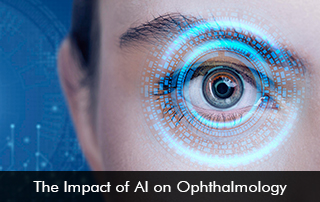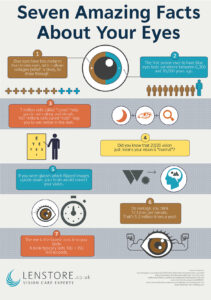Artificial intelligence is a powerful tool, especially in ophthalmology. With the ability to analyze vast amounts of data and detect patterns, AI improves diagnostics, treatment planning, and patient outcomes. In honor of Healthy Vision Month, we delve deeper into the advancements AI has made in the field of ophthalmology and how integration with EMR software can take it mainstream.
AI Advancements in Ophthalmology
Enhanced Diagnostic Accuracy – Imaging is a huge part of ophthalmology diagnosis. AI algorithms have demonstrated remarkable accuracy in analyzing medical images. Indeed, retinal scans and OCT images are compared to a vast database of known cases through AI. Furthermore, AI can assist ophthalmologists in diagnosing conditions like diabetic retinopathy, age-related macular degeneration, and glaucoma with greater precision.
Early Disease Detection – Early detection is critical for successfully treating many eye diseases. AI algorithms help analyze patient data and identify biomarkers which enables ophthalmologists to intervene promptly. This procedure is fast and reliable, leading to better outcomes.
Personalized Treatment Planning – Additionally, AI algorithms can analyze large datasets and patient records in a matter of seconds. This greatly reduces the time taken to identify personalized treatment options for individuals. As a result, AI can help ophthalmologists develop tailored treatment plans that minimize side effects.
Surgical Assistance – Moreover, and most importantly, AI technologies can assist ophthalmologists during surgical procedures. This is especially true for cataract surgery or laser refractive surgery. By analyzing real-time data, AI algorithms can provide real-time feedback, guidance, and predictive analytics, enhancing surgical precision and safety.
Integration of AI with EMR Software
The seamless integration of AI with EMR software is crucial for maximizing its impact in ophthalmology. EMR software serves as a repository of patient data. Not ony does it facilitate efficient access and retrieval, it also assists in analysis of information. Therefore, integration with AI capabilities is a must.
Streamlined Workflow – Firstly, AI integrated EMR software automates data analysis and generates actionable insights in real time. This saves ophthalmologists valuable time. It also enables them to focus on patient care.
Comprehensive Patient Records – Secondly, AI integrated EMR combines patient data and imaging to predict outcomes and generate recommendations. This holistic view enhances ophthalmologists’ understanding of each patient’s condition. Moreover, it assists in speedy yet informed decision-making.
Data-driven Research and Population Health Management – Furthermore, integrated AI and EMR systems enable large-scale data analysis for research purposes. These are especially essential for population health management purposes. By anonymizing and aggregating patient data, valuable insights can be derived, leading to advancements in ophthalmic research, disease prevention, and public health initiatives.
Continuous Learning and Improvement – And finally, AI algorithms integrated with EMR software can learn from patient data over time. This enables a rapid and continual improvment in diagnostic accuracy and treatment recommendations. This iterative learning process contributes to the refinement of AI algorithms and enhances clinical utility.







